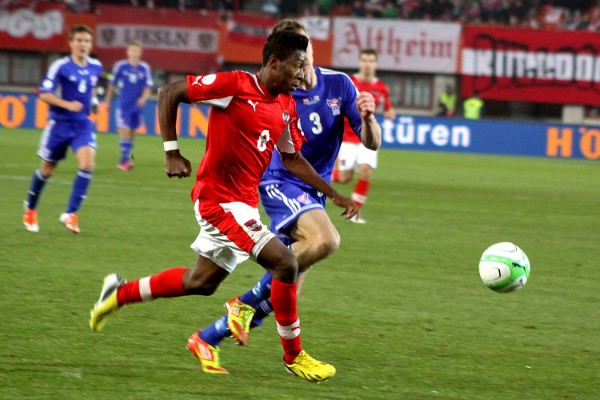 Earlier this week FIFA, the world governing body of football, announced plans to expand the World Cup from 32 to 48 teams starting in 2026. It is fair to say that this has been met with mixed reactions, in part due to the politics and money involved. However, for an economist one particularly interesting question is how the change will affect the incentives of the teams taking part in the competition.
Earlier this week FIFA, the world governing body of football, announced plans to expand the World Cup from 32 to 48 teams starting in 2026. It is fair to say that this has been met with mixed reactions, in part due to the politics and money involved. However, for an economist one particularly interesting question is how the change will affect the incentives of the teams taking part in the competition.
As a result of the change in the first stage of the competition, teams will be play the two other teams in their group. The best two teams in the group will then progress to the next round with the worst team going home. This is in contrast to the current format where the best two teams from a group of four go through to the next round.
Currently, in the final round of group matches all four of the teams in the group play simultaneously. However, an immediate implication of the new format is that this will no longer be the case. Instead, one of the teams will have finished their group matches before the other two teams play each other. This could have important implications for the incentives of the teams involved. To see this we can recall a very famous match played under similar circumstances between West Germany and Austria at the 1982 World Cup.
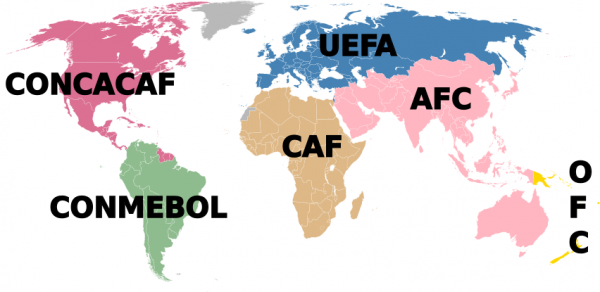 The results of the earlier group games meant that if West Germany beat Austria by one or two goals to nil both teams would progress to the next round. Any other result would mean that Algeria progressed at the expense of one of these two teams. The way in which the match played out was that West Germany scored early on and much of the rest of the game descended into farce. Both teams refused to attack or tackle their opponents, as they had no incentive to so (see here for some clips of the action, or lack of!).
The results of the earlier group games meant that if West Germany beat Austria by one or two goals to nil both teams would progress to the next round. Any other result would mean that Algeria progressed at the expense of one of these two teams. The way in which the match played out was that West Germany scored early on and much of the rest of the game descended into farce. Both teams refused to attack or tackle their opponents, as they had no incentive to so (see here for some clips of the action, or lack of!).
There is no evidence to suggest that West Germany and Austria had come to a formal agreement to do this. Instead, the two teams appear to have simply had a mutual understanding that refraining from competing would be beneficial for both of them.
This is exactly what economists refer to as tacit collusion – a mutual understanding that refraining from competition and keeping prices high benefits all firms in the market. Much like the fans who had to sit through the farce of a game (you can hear the frustration of the crowd in the video clip linked to above), the end result is harm to consumers who have to pay the higher prices or go without the product.
For this reason governments use competition policy to try to stop situations arising in markets that make the possibility of tacit collusion more likely. One way in which this is done is by preventing mergers in markets where tacit collusion appears possible and would be facilitated by the reduction in the number of firms as a result of the merger. The equivalent for the World Cup would be preventing a change in the format of the competition.
An alternative approach is to tinker with the rules of the game in order to make collusion harder. FIFA seems to have some awareness of the possibility of doing this as it is suggesting that it may require all tied games to extra-time and then a penalty shoot-out in order to determine a winner. Clearly, this would go at least some way to alleviating concerns about tacit collusion in the final group matches because coordinating on a draw would no longer be possible. In a similar fashion, competition authorities can also intervene in markets to change the rules of the game (see for example the recent intervention in the UK cement industry).
Therefore, more generally, the World Cup example highlights the fact that variations in the structure of markets and the rules of the game can have significant effects on firms’ incentives and this can have important consequences for market outcomes. It will certainly be fascinating to see what rules are imposed for the 2026 World Cup and how the teams taking part respond.
Articles
World Cup: Fifa to expand competition to 48 teams after vote BBC News (10/1/17)
How will a 48-team World Cup work? Fifa’s plan for 2026 explained The Guardian, Paul MacInnes (10/1/17)
The Disgrace of Gijón and the 48-team FIFA World Cup Mike or the Don (12/1/17)
Questions
- What is the difference between tacit collusion and a cartel?
- Why does a reduction in the number of firms in a market make collusion easier?
- What other factors make collusion more likely?
- How does competition policy try to prevent the different forms of collusion?
 An earlier post on this site described a recent row between Tesco and Unilever that erupted when Unilever attempted to raise the prices it charges Tesco for its products. Unilever justified this because its costs have increased as a result of the UK currency depreciation following the Brexit decision.
An earlier post on this site described a recent row between Tesco and Unilever that erupted when Unilever attempted to raise the prices it charges Tesco for its products. Unilever justified this because its costs have increased as a result of the UK currency depreciation following the Brexit decision.
It also appears that more general concerns that the fall in the value of sterling would lead to higher retail prices were prevalent around the time that the Tesco Unilever dispute came to light. Former Sainsbury’s boss, Justin King, made clear that British shoppers should be prepared for higher prices. He also said that:
Retailers’ margins are already squeezed. So there is no room to absorb input price pressures and costs will need to be passed on. But no one wants to be the first to break cover. No business wants to be the first to blame Brexit for a rise in prices. But once someone does, there will be a flood of companies because they will all be suffering.
It is interesting to consider further why the Tesco and Unilever case was the first to make the headlines and why their dispute was resolved so quickly. In addition, what are the more general implications for the retail prices consumers will have to pay?
Arguably, Unilever saw itself as having a strong hand in negotiations with Tesco because its product portfolio includes a wide variety of must-stock brands, including Pot Noodles, Marmite and Persil, that are found in 98% of UK households..
Unilever has been criticised for using the currency devaluation as an excuse to justify charging Tesco more, since most of its products are made in the UK. However, Unilever was quick to point outthat commodities it uses in the manufacture of products are priced in US dollars, so the currency devaluation can still affect the cost of products that it manufactures in the UK. In addition, Unilever’s chief financial officer, Graeme Pitkethly, insisted that price increases due to rising costs were a normal part of doing business:
We are taking price increases in the UK. That is a normal devaluation-led cycle.
On the other hand, even if the cost increases faced by Unilever are genuine, it is interesting to speculate whether it would have been so quick to adjust its prices downwards in response to a currency appreciation. After all, a commonly observed phenomenon across a range of markets is ‘rockets and feathers’ pricing behaviour i.e. prices going up from a cost increase more quickly than they go down following an equivalent cost decrease.
Compared to Unilever, some other suppliers are likely to have less bargaining power – in particular, those competing in highly fragmented markets and those producing less branded products. In such markets the suppliers may be forced to accept cost increases. For example, almost 50% of butter and cheese consumed in the UK comes from milk sourced from EU markets. Protecting such suppliers is one of the key roles of the Grocery code of conduct that the UK competition agency has put in place.
From Tesco’s point of view it will have benefited from good publicity by doing its best to protect consumers from price hikes. Helen Dickinson, chief executive of the British Retail Consortium, said:
Retailers are firmly on the side of consumers in negotiating with suppliers and improving efficiencies in the supply chain to control the inflationary pressure that is building through the devaluation of the pound.
However, it is also clear that Tesco had its own motives for resisting increased costs for Unilever’s products. In such situations both supplier and retailer should be keen to avoid a situation where they both impose their own substantial mark-ups at each stage of the supply chain. It is well established that this creates a double mark-up and not only harms consumers, but also the supplier and retailer themselves. Instead, the firms have an incentive to use more complex contractual arrangements to solve the problem. For example, suppliers may pay slotting allowances to get a place on the retailers’ shelves in exchange for lower retail mark-ups.
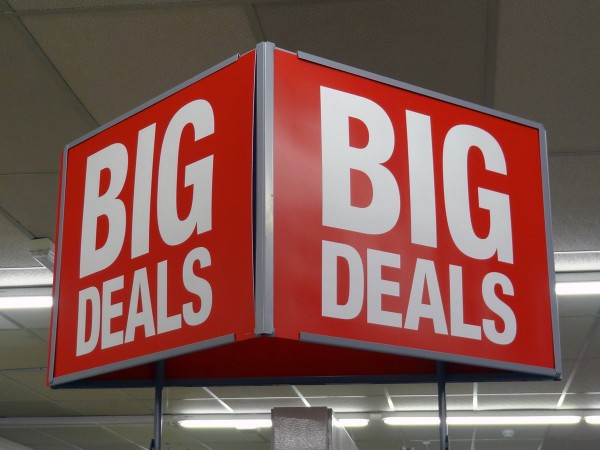 It has also been claimed that cutthroat competition in the supermarket industry, especially from discounter retailers Aldi and Lidl, made Tesco particularly keen to prevent price rises. Some arguments suggest that these discounters will be best placed to benefit from the currency devaluation as they sell more own brands, have a limited range, the leanest supply chains and benefit from substantial economies of scale. On the other hand, they source more of their products from abroad and it has been suggested that:
It has also been claimed that cutthroat competition in the supermarket industry, especially from discounter retailers Aldi and Lidl, made Tesco particularly keen to prevent price rises. Some arguments suggest that these discounters will be best placed to benefit from the currency devaluation as they sell more own brands, have a limited range, the leanest supply chains and benefit from substantial economies of scale. On the other hand, they source more of their products from abroad and it has been suggested that:
A fall in sterling will push prices up for everyone who sources products from Europe, but Aldi and Lidl will be affected more than most.
One prediction suggests that the overall impact of the currency depreciation on food prices will be an increase of around 3%. This may be particularly worrisome given concerns that the impact will fall most heavily on benefit claimants and other low-income households.
Outside of the food industry, Mike Rake, the chairman of BT, has highlighted the fact that:
Imported mobile phones and broadband home hubs were already 10% more expensive and the cost would have to be passed on to consumers in the near future.
It is therefore clear that the currency devaluation has the potential to create substantial tensions in the supply-chain agreements across a range of markets. The impact on the firms involved and on consumers will depend upon a wide range of factors, including the competitiveness of the markets, the nature of the firms involved and their bargaining power. Furthermore, evidence from an earlier currency depreciation in Latin America makes clear that the price elasticity of demand will be another factor that determines the impact price rises have.
Finally, it is also worth noting that a potential flip side of the currency depreciation is a boost for UK exports. However, it has been suggested that the manufacturing potential to take advantage of this in the UK is limited. In addition, even the manufacturing that does take place, for example in the car industry, often relies on components imported from abroad.
Articles
The Brexiteers’ Marmite conspiracy theories exposed their utter ignorance of how markets really work Independent, Ben Chu (16/10/16)
Tesco price dispute sends Unilever brand perceptions tumbling Marketing Week, Leonie Roderick (17/10/16)
Unilever and Tesco both benefit from their price row, but Brexit will bring more pain Marketing Week, Mark Ritson (19/10/16)
Why the Tesco v Unilever feud was good for British business campaign, Helen Edwards (20/10/16)
Questions
- What are some of the factors that affect a supplier’s bargaining power?
- How might the discount retailers respond to the currency devaluation?
- Use the figures from Latin America in the article cited above to calculate the price elasticity of demand.
- Explain why the price elasticity of demand is an important determinant of the effect of a price rise.
- Can you think of other examples of markets that may be particularly prone to price rises following a currency depreciation?
 This time last year bookmakers Ladbrokes and Coral announced their intention to merge. This was closely followed by a merger between Betfair and Paddy Power. This wave of consolidation appears to have been partly motivated by the rise of online gambling, stricter regulation and increased taxation.
This time last year bookmakers Ladbrokes and Coral announced their intention to merge. This was closely followed by a merger between Betfair and Paddy Power. This wave of consolidation appears to have been partly motivated by the rise of online gambling, stricter regulation and increased taxation.
The UK Competition and Markets Authority (CMA) commenced an initial investigation into the Ladbrokes-Coral merger in late 2015 and, at the request of the merging parties, agreed to fast track the case to a detailed phase 2 investigation.
Despite the growth in the online market, the CMA’s investigation recognised the continued importance of high-street betting shops:
Although online betting has grown substantially in recent years, the evidence we’ve seen confirms that a significant proportion of customers still choose to bet in shops – and many will continue to do so after the merger.
The CMA identified almost 650 local markets where it believed there would be a substantial lessening of competition. It concluded that this could have both local and national effects:
Discounts and offers of free bets to individual customers are 2 of the ways betting shops respond to local competition which could be threatened by the merger. Such a widespread reduction in competition at the local level could also worsen those elements that are set centrally, such as odds and betting limits.
Therefore, earlier this week the CMA announced that before it is prepared to clear the merger, the parties must sell around 350 stores in order to preserve competition in the problem markets (many of these overlap so the number of store sales required is less than the number of problem markets). This divestment represents around 10% of the total number of stores currently owned by the two merging parties. It appears that rivals Betfred and Boylesports, plus a number of private equity investors, are already interested in purchasing the stores.
This may also not be the last consolidation in the industry with the struggling leading bookmaker William Hill apparently attracting merger interest from rival 888 in combination with a casino and bingo hall operator.
Articles
BHA warns CMA over Coral-Ladbrokes merger Racing Post, Bill Barber (7/7/16)
Ladbrokes-Gala Coral must sell 350-400 shops to clear merger BBC, (26/7/16)
William Hill is lukewarm on ambitious three-way merger deal The Telegraph, Ben Martin (25/7/16)
Questions
- Why might the merging parties in this case have been so keen to fast track the case to phase 2?
- What are the key factors in defining the market in this case? How do you think these would have affected the decision?
- Are there arguments that wider social issues in addition to the effect on competition should be taken into account when considering mergers in this market?
- Which of the potential purchasers of the divested stores do you think might be best for competition?
- How do you think this market will evolve in the future?
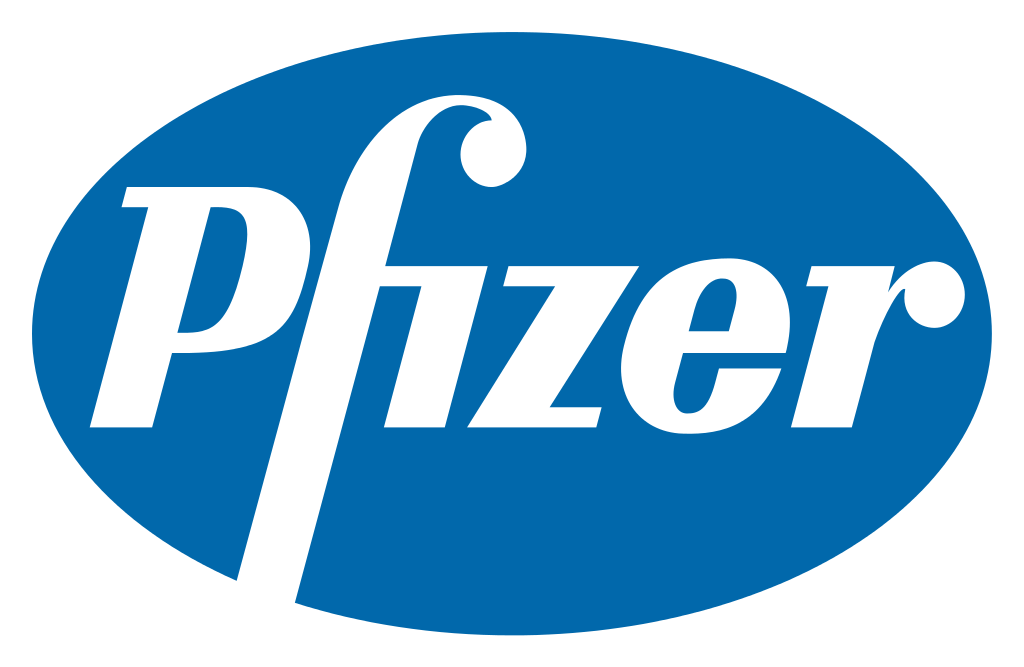 Evidence of widespread tax avoidance has featured heavily in the news recently. Furthermore, recent developments also suggest that avoiding taxes has become an important motivation for merger and acquisition (M&A) activity. For example, Pfizer, the US pharmaceutical giant that producers Viagra, has for a while been looking to expand through M&A. Following a failed
Evidence of widespread tax avoidance has featured heavily in the news recently. Furthermore, recent developments also suggest that avoiding taxes has become an important motivation for merger and acquisition (M&A) activity. For example, Pfizer, the US pharmaceutical giant that producers Viagra, has for a while been looking to expand through M&A. Following a failed  attempt to merge with the British pharmaceutical company AstraZeneca in 2014, it instead agreed late last year to merge with a company called Allergan. This was set to be the largest healthcare merger ever, worth over £100bn.
attempt to merge with the British pharmaceutical company AstraZeneca in 2014, it instead agreed late last year to merge with a company called Allergan. This was set to be the largest healthcare merger ever, worth over £100bn.
What is key about Allergan is that, whilst it is run from the USA, it is legally registered as being based in Ireland. It has been strongly argued that the key motivation for the merger was tax avoidance with Pfizer’s strategy described in this way:
They look for a likely partner based in a country with a lower corporate tax regime and suggest a merger. When the merger goes through, the company based in the US moves its HQ – but not the bulk of its operations – to the low-tax jurisdiction, where it books the bulk of its profits. At a stroke, the company’s tax bill is cut.
This practice is sometimes referred to as an inversion. It has been suggested that over the past five years around 40 completed mergers have been motivated by similar objectives.
However, policy makers, in particular in the USA, where corporation tax is high, have increasingly become aware of the practice. President Obama recently made clear that:
If corporations are paying less tax, only one of two things can happen. The US will have less to spend on schools, roads and public health, or taxes will have to be raised on the country’s middle class.
In 2014 some tightening of the tax rules took place, but with limited effect. Then, earlier this month President Obama implemented a series of new rules to attempt to prevent the practice. He stressed that these new rules would help to deter companies from taking advantage of:
one of the most insidious tax loopholes out there, fleeing the country just to get out of paying their taxes.
Almost immediately the Pfizer-Allegan merger was abandoned and Pfizer was required to pay a break-up fee of $150m to Allegran. The parties involved were far from happy and the chief executive of Allegran stated that:
For the rules to be changed after the game has been played is a bit un-American.
However, a spokesman for the White House responded that:
I think it is difficult to have a lot of patience for an American C.E.O. trying to execute a complicated financial transaction to avoid paying taxes in America, talking about what it means to be a good citizen of the United States.
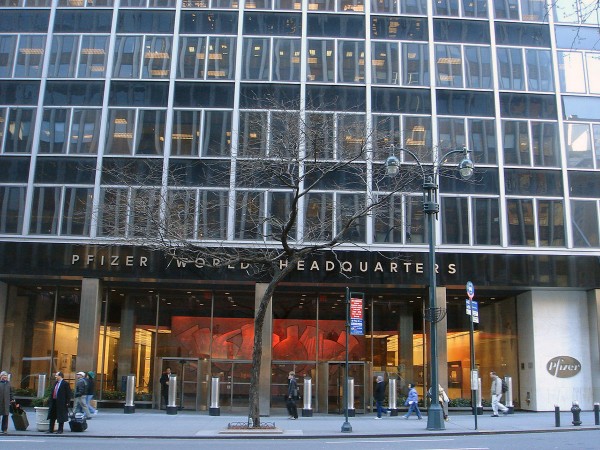 As has been highlighted, the decision to immediately abandon the merger provides a clear indication that the business case and potential synergies arising from combining the two companies were far less important than the benefits from tax avoidance.
As has been highlighted, the decision to immediately abandon the merger provides a clear indication that the business case and potential synergies arising from combining the two companies were far less important than the benefits from tax avoidance.
Where does the abandoned merger leave Pfizer? One option will be to consider alternative mergers. Perhaps reflecting this possibility, the share prices of foreign rivals such as AstraZeneca and GlaxoSmithKline increased following the announcement that the Allegran deal had been abandoned. However, an alternative under serious consideration appears to be the opposite strategy of shrinking Pfizer’s operations. It has been argued that this would allow the company to be become more focused.
It remains to be seen in which direction Pfizer will go. However, what this example clearly illustrates is the impact changes in regulatory policy can have on firms’ strategic decisions.
Articles
Collapse of $160bn Pfizer and Allergan merger shocks corporate US Financial Times, Barney Jopson, David Crow, James Fontanella-Khan and Arash Massoudi (6/4/16)
It’s off: the end of Pfizer’s $160 billion Allergan merger The Atlantic, Krishnadev Calamur (6/4/16)
Pfizer and Allergan terminate $160bn merger following US tax crack-down The Telegraph, Julia Bradshaw (6/4/16)
Questions
- Who do you think will be the big winners and losers from the merger being abandoned?
- Why do you think break-up fees are used in merger deals?
- What are the pros and cons for Pfizer of continuing to pursue M&As rather than downsizing?
- Are there any alternative strategies it might consider?
 There have been a number of recent developments in communications markets that may significantly alter the competitive landscape. First, the UK Competition and Markets Authority (CMA) has provisionally cleared BT to takeover the EE mobile phone network. The deal will allow BT to re-establish itself as a mobile network provider, having previously owned O2 until it was sold in 2005. The CMA said that:
There have been a number of recent developments in communications markets that may significantly alter the competitive landscape. First, the UK Competition and Markets Authority (CMA) has provisionally cleared BT to takeover the EE mobile phone network. The deal will allow BT to re-establish itself as a mobile network provider, having previously owned O2 until it was sold in 2005. The CMA said that:
They operate largely in separate areas with BT strong in supplying fixed communications services (voice, broadband and pay TV), EE strong in supplying mobile communications services, and limited overlap between them in both categories of service.
BT will therefore be in a better position to compete with rivals such as Virgin Media who were early movers in offering. 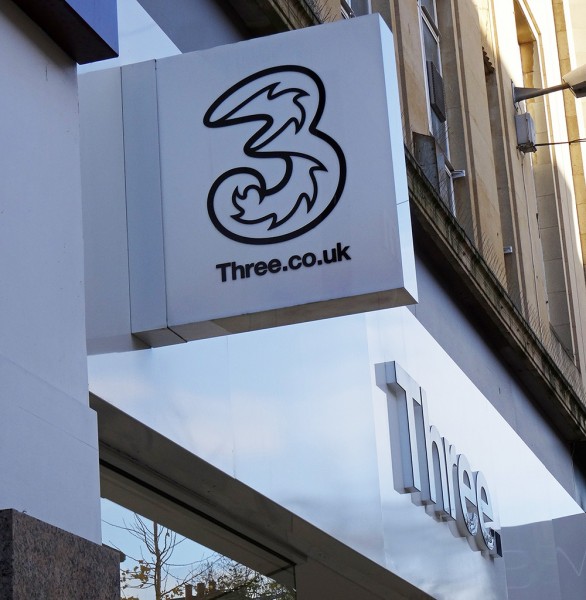 Second, O2 itself (currently owned by Telefónica) is the subject of a takeover bid from Hutchinson Whampoa who already owns the mobile network Three. Because the companies meet their turnover criteria, this deal is being investigated by the European Commission (EC) and the signs don’t look good. If it goes ahead, it would create the largest mobile operator in the UK and leave just three main players in the market. The EC is concerned that the merger would lead to higher prices, reduced innovation and lower investment in networks. Previously, considerable consolidation in telecommunications markets across Europe has been allowed. However, recent evidence, including the prevention of a similar deal in Denmark, suggests the EC is starting to take a tougher stance.
Second, O2 itself (currently owned by Telefónica) is the subject of a takeover bid from Hutchinson Whampoa who already owns the mobile network Three. Because the companies meet their turnover criteria, this deal is being investigated by the European Commission (EC) and the signs don’t look good. If it goes ahead, it would create the largest mobile operator in the UK and leave just three main players in the market. The EC is concerned that the merger would lead to higher prices, reduced innovation and lower investment in networks. Previously, considerable consolidation in telecommunications markets across Europe has been allowed. However, recent evidence, including the prevention of a similar deal in Denmark, suggests the EC is starting to take a tougher stance.
If we compare the two proposed takeovers, it is clear that the O2–Three merger raises more concerns for the mobile communications market because they are both already established network providers.  However, it is increasingly questionable whether looking at this market in isolation is appropriate. As communication services become increasingly intertwined and quad-play competition becomes more prevalent, a wider perspective becomes more appropriate. Once this is taken, the BT–EE deal may raise different, but still important, concerns.
However, it is increasingly questionable whether looking at this market in isolation is appropriate. As communication services become increasingly intertwined and quad-play competition becomes more prevalent, a wider perspective becomes more appropriate. Once this is taken, the BT–EE deal may raise different, but still important, concerns.
Finally, the UK’s communications regulator, OFCOM, is currently undertaking a review of the whole telecommunications market. It is evident that their review will recognise the increased connections between communications markets as they have made clear that they will:
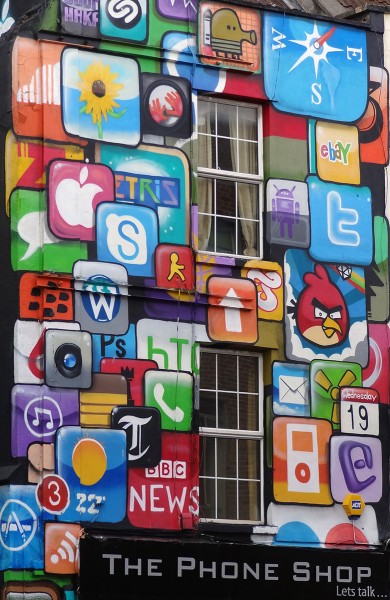 examine converging media services – offered over different platforms, or as a ‘bundle’ by the same operator. For example, telecoms services are increasingly sold to consumers in the form of bundles, sometimes with broadcasting content; this can offer consumer benefits, but may also present risks to competition.
examine converging media services – offered over different platforms, or as a ‘bundle’ by the same operator. For example, telecoms services are increasingly sold to consumers in the form of bundles, sometimes with broadcasting content; this can offer consumer benefits, but may also present risks to competition.
One particular concern appears to be BT’s internet broadband network, Openreach. This follows complaints from competitors such as BSkyB who pay to use BT’s network. Their concerns include long installation times for their customers and BT’s lack of investment in the network. One possibility being considered is breaking up BT with the forced sale of its broadband network.
It will be fascinating to see how these communications markets develop over time.
BT takeover of EE given provisional clearance by competition watchdog The Guardian, Jasper Jackson (28/10/15)
Ofcom casts doubt on O2/Three merger BBC News, Chris Johnston (08/10/15)
BT and Openreach broadband service could be split in Ofcom review The Guardian, John Plunkett (16/07/15)
Questions
- What are the key features of communications markets? Explain how these markets have developed over the last few decades.
- What are the pros and cons for consumers of being able to buy a quad-play bundle of services?
- How do you think firms that are currently focused on providing mobile phone services will need to change their strategies in the future?
- Why is BT in a powerful position as one of the only owners of a broadband network?
- Instead of forcing BT to sell its broadband network, what other solutions might there be?
 Earlier this week FIFA, the world governing body of football, announced plans to expand the World Cup from 32 to 48 teams starting in 2026. It is fair to say that this has been met with mixed reactions, in part due to the politics and money involved. However, for an economist one particularly interesting question is how the change will affect the incentives of the teams taking part in the competition.
Earlier this week FIFA, the world governing body of football, announced plans to expand the World Cup from 32 to 48 teams starting in 2026. It is fair to say that this has been met with mixed reactions, in part due to the politics and money involved. However, for an economist one particularly interesting question is how the change will affect the incentives of the teams taking part in the competition. The results of the earlier group games meant that if West Germany beat Austria by one or two goals to nil both teams would progress to the next round. Any other result would mean that Algeria progressed at the expense of one of these two teams. The way in which the match played out was that West Germany scored early on and much of the rest of the game descended into farce. Both teams refused to attack or tackle their opponents, as they had no incentive to so (see here for some clips of the action, or lack of!).
The results of the earlier group games meant that if West Germany beat Austria by one or two goals to nil both teams would progress to the next round. Any other result would mean that Algeria progressed at the expense of one of these two teams. The way in which the match played out was that West Germany scored early on and much of the rest of the game descended into farce. Both teams refused to attack or tackle their opponents, as they had no incentive to so (see here for some clips of the action, or lack of!).








